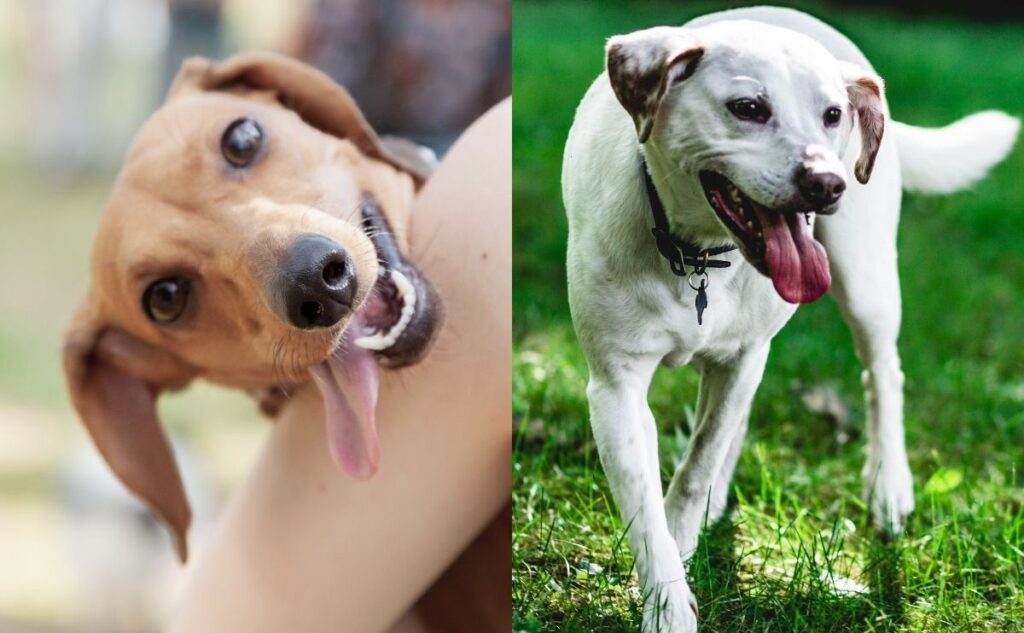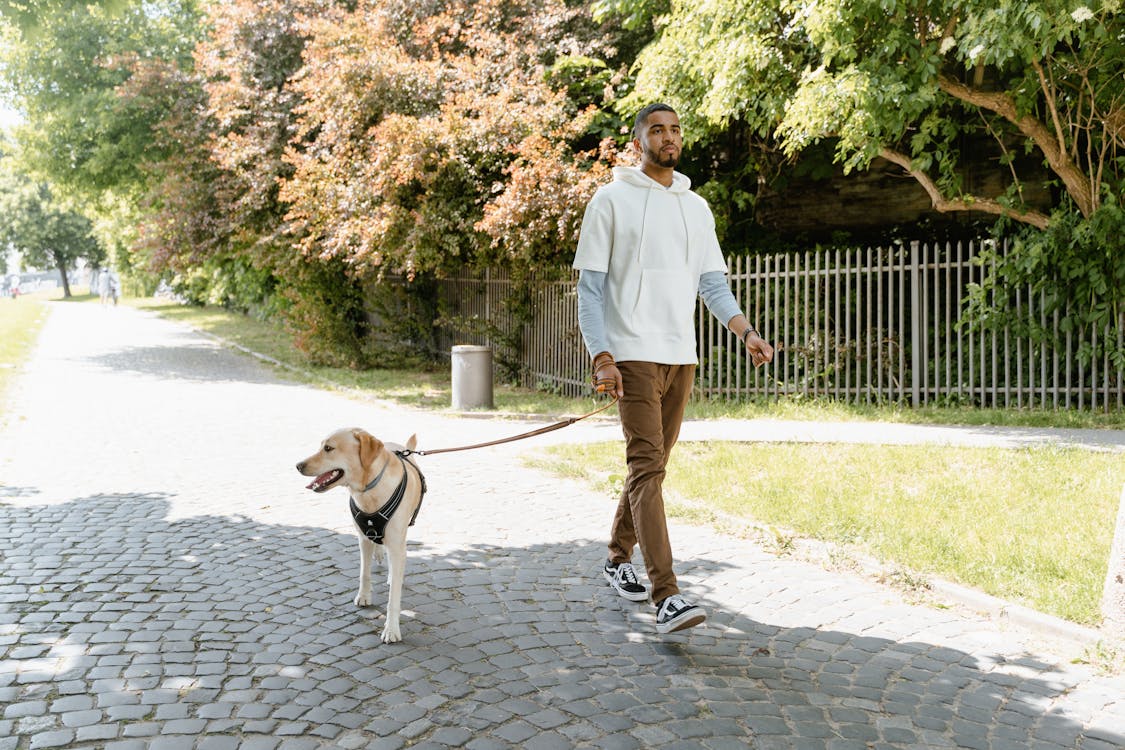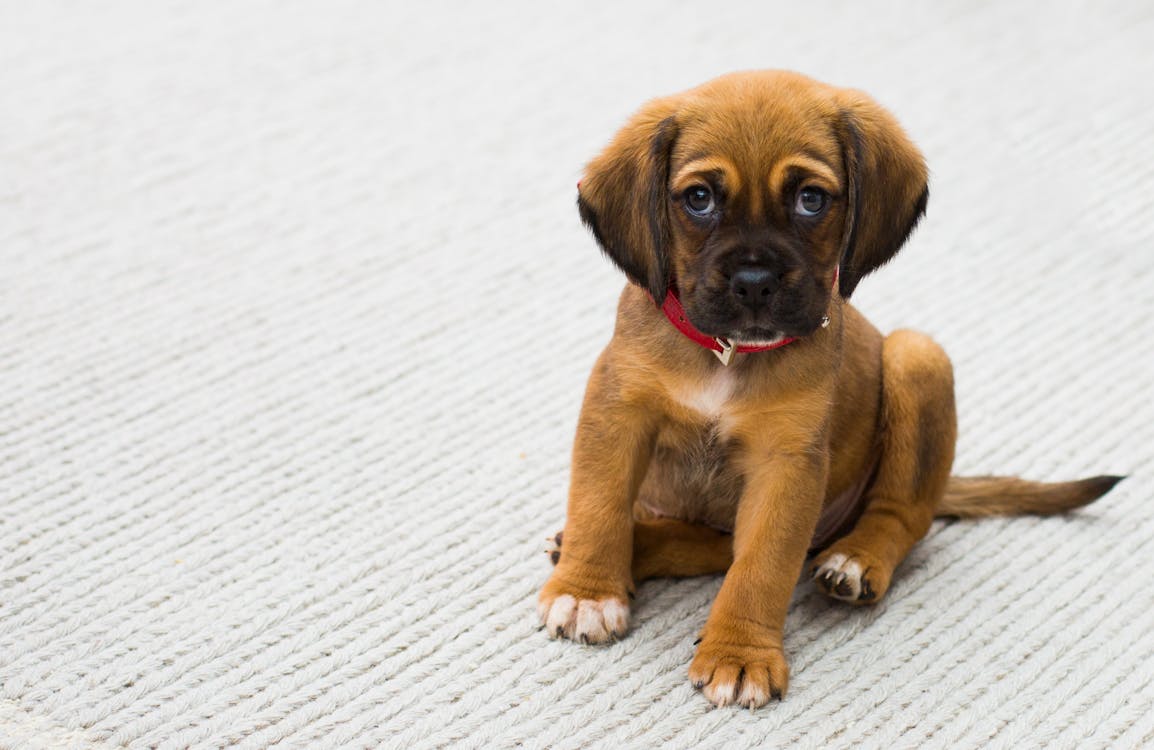The 2025 Summer Heat is Here: Your Ultimate Guide to Keeping Your Dog Cool & Safe
You feel it the moment you open the door. That wall of heavy, humid air that seems to suck the breath right out of you. Here in Ottawa, like so many places this July, the summer heat has arrived with a vengeance. While we can seek refuge with air conditioning, iced lattes, and lighter clothing, our furry best friends, wrapped in their permanent fur coats, don't have it so easy.
There's a specific kind of anxiety that every loving dog owner feels on a scorching hot day. We watch them panting, we feel the heat radiating off their bodies, and we worry. Are they just hot, or are they in distress? Are they drinking enough water? Is it too hot for our evening walk? The questions can be overwhelming because we are their sole protectors against a danger they don't fully understand.
This is your complete, compassionate, and expert-informed guide to navigating the heat. We're going to go far beyond the simple "provide shade and water" advice. We’ll delve into the science of how dogs cool down, identify the subtle but critical warning signs of heatstroke, and provide a comprehensive checklist of proactive strategies and emergency actions. Think of this as your master plan for a safe, happy, and cool summer for the dog you love so much.
Let's empower you with the knowledge to be your dog's ultimate summer safety advocate.

Heavy panting is a key sign your dog is working hard to stay cool, but it's crucial to know when it signals distress.
Table of Contents
- Section 1: The Canine Cooling System: Why the Heat is So Hard on Dogs
- Section 2: Which Dogs Are Most at Risk?
- Section 3: Danger Signs: Recognizing Heatstroke Before It's an Emergency
- Section 4: Proactive Cooling: Your Ultimate Checklist for Hot Days
- Section 5: The Hot Car Danger: Why "Not Even for a Minute" is a Lifesaving Rule
- Section 6: Emergency Action Plan: What to Do If You Suspect Heatstroke
- Section 7: Common Myths & FAQs About Keeping Dogs Cool
- Section 8: Your Partner in Summer Safety
Section 1: The Canine Cooling System: Why the Heat is So Hard on Dogs
The fundamental reason dogs are so susceptible to heat is that their cooling system is far less efficient than ours. While humans are covered in sweat glands that allow us to cool our entire bodies through evaporation, dogs are not.
They rely on three main, less effective methods to regulate their body temperature:
- Panting: This is their primary cooling mechanism. As a dog pants, air moves rapidly over the moist surfaces of their tongue, mouth, and upper respiratory tract. This causes moisture to evaporate, which has a cooling effect. However, on extremely hot and humid days, when the air is already saturated with moisture, panting becomes much less effective.
- Vasodilation: This is a process where the dog's body pushes hot blood to blood vessels closer to the surface of their skin, especially on their ears and face. This allows the heat from the blood to dissipate into the air. You can often feel this—a hot dog's ears will feel like little radiators.
- Sweating (A Tiny Bit): Dogs do have a small number of sweat glands in their paw pads (merocrine glands), but the surface area is so small that it provides negligible cooling. It's more likely for grip than for thermoregulation.
As experts like those featured in the BBC Future article on this topic explain, this limited system means that when a dog's internal temperature starts to rise, it can be very difficult for them to bring it back down on their own, especially when the external temperature is high.
Section 2: Which Dogs Are Most at Risk?
While all dogs can suffer from the heat, certain breeds and types are exceptionally vulnerable. If your dog falls into one of these categories, you need to be hyper-vigilant.
- Brachycephalic (Flat-Faced) Breeds: This is the highest-risk group. Breeds like French Bulldogs, Pugs, Boxers, and Shih Tzus have compromised upper airways due to their shortened skulls. This makes panting, their primary cooling method, incredibly inefficient and strenuous. They can overheat dangerously fast.
- Giant Breeds: Large dogs like Great Danes, St. Bernards, and Newfoundlands have more body mass to cool down, putting a greater strain on their heart and lungs.
- Dark-Coated Dogs: Black, dark brown, or gray coats absorb more of the sun's heat than lighter coats, causing their body temperature to rise more quickly.
- Overweight Dogs: Excess fat acts as insulation, trapping heat inside the body and making it harder for the dog to cool down.
- Puppies and Senior Dogs: Very young and very old dogs have less efficient internal systems for regulating body temperature.
- Double-Coated Breeds: While their undercoat provides insulation from both cold and heat, if it's not well-brushed and becomes matted, it can trap hot air against the skin. This includes breeds like Huskies, Samoyeds, and German Shepherds.
- Dogs with Medical Conditions: Dogs with heart problems, laryngeal paralysis, or other respiratory conditions are at a much higher risk.
Section 3: Danger Signs: Recognizing Heatstroke Before It's an Emergency
Heatstroke (hyperthermia) doesn't happen all at once. It begins with milder signs of heat exhaustion. Learning to spot these early "whispers" of trouble can prevent a full-blown, life-threatening emergency. Watch your dog closely for this progression.
Stage 1: Early Signs of Heat Exhaustion (Act Now!)
- Unusually heavy or rapid panting that doesn't subside when they rest.
- Thick, ropey, and excessive drool.
- Bright red gums and tongue (a sign of vasodilation).
- Noticeable restlessness or agitation; an inability to get comfortable.
- A look of desperation or anxiety in their eyes.
- They may seem slightly less responsive or slower to follow commands.
Stage 2: Advanced Heatstroke (THIS IS A VETERINARY EMERGENCY)
If you see any of these signs, begin emergency cooling measures (see Section 6) and get to a veterinarian IMMEDIATELY.
- Wobbliness, staggering, or disorientation (ataxia).
- Pale or blueish gums, indicating poor oxygenation.
- Vomiting or diarrhea (sometimes with blood).
- Extreme lethargy or unwillingness to move.
- Confusion or unresponsiveness.
- Muscle tremors or seizures.
- Collapse and loss of consciousness.
Section 4: Proactive Cooling: Your Ultimate Checklist for Hot Days
The best way to treat heatstroke is to prevent it from ever happening. Here is your actionable checklist for keeping your dog safe and comfortable.
Timing Walks & The Pavement Test
The sun is at its most intense between 10 AM and 6 PM. Adjust your walk schedule to avoid these peak hours.
- Walk Early, Walk Late: Aim for walks in the cool of the early morning and late evening, after the sun has gone down and surfaces have had time to cool.
- Live by the 5-Second Rule: Before any walk, place the back of your hand on the pavement or asphalt. If you cannot comfortably hold it there for 5 seconds, it is **too hot** for your dog's paw pads. Asphalt can be 40-60 degrees hotter than the air temperature and can cause severe burns.
- Seek Grass and Shade: If you must go out during the day for a potty break, stick to grassy areas and shady paths.

The 5-second pavement test is a simple, non-negotiable rule for safe summer walks.
Hydration Station Central
Proper hydration is critical for preventing overheating.
- Multiple Water Sources: Place several large bowls of fresh, cool water throughout your home and yard to encourage frequent drinking.
- Make it Appealing: Add a few ice cubes to the water bowl. Some dogs are more enticed by moving water, so a pet water fountain can be a great investment.
- Water on the Go: Always carry a collapsible bowl and a bottle of cool water for your dog on any outing, no matter how short.
- Add Water to Food: Add a generous splash of water or low-sodium chicken/beef broth to their kibble to increase their fluid intake.
- Check for Dehydration: Gently lift the skin on the back of your dog's neck. If it snaps back quickly, they are likely hydrated. If it goes down slowly, they may be dehydrated. Also, check their gums; they should be slick and wet, not dry and tacky.
Creating a Cool Sanctuary at Home
- Air Conditioning is Best: If you have AC, use it. Keep your dog in the air-conditioned part of the house during the hottest parts of the day.
- Fans and Airflow: Fans don't cool dogs as effectively as humans (since they don't sweat much), but they do help with evaporative cooling during panting and circulate cool air from lower parts of the room. Placing a bowl of ice in front of a fan can create a mini AC effect.
- Block the Sun: Keep curtains and blinds closed during the day to block the sun's heating effect.
- Cool Surfaces: Ensure your dog has access to cool surfaces like tile or linoleum floors. Many dogs will naturally seek these out.
Cooling Gear & Products
The pet market has a variety of products designed to help dogs beat the heat.
- Cooling Mats/Beds: These are often filled with a pressure-activated, non-toxic gel that absorbs the dog's body heat. They don't require electricity or refrigeration and provide a cool surface for hours.
- Cooling Vests and Bandanas: These work through evaporation. You soak them in cool water, wring them out, and put them on your dog. As the water evaporates, it draws heat away from their body. These are excellent for use during walks in warm (not dangerously hot) weather.
- Elevated Mesh Beds: These cot-style beds allow for 360-degree airflow, preventing hot spots from forming underneath your dog as they lie down.
Become a Frozen Treat Chef
Frozen treats are a fun and delicious way to help your dog cool down from the inside out.
- "Pupsicles": Blend dog-safe ingredients like plain yogurt, pumpkin puree, bananas, or blueberries with a bit of water and freeze them in an ice cube tray.
- Frozen Kongs: Stuff a Kong toy with wet food, mashed sweet potato, or peanut butter (ensure it's Xylitol-free!) and freeze it for a long-lasting, cooling mental enrichment activity.
- Simple & Easy: Simply freezing low-sodium chicken broth in an ice cube tray makes for a savory, hydrating treat.
Grooming for Comfort
A well-maintained coat is a dog's personal climate control system.
- Brush, Don't Shave: This is a common myth. For double-coated breeds like Huskies, Golden Retrievers, or German Shepherds, their undercoat acts as insulation against the heat. Shaving it removes this natural protection and can expose their skin to sunburn.
- The Key is Brushing: Regularly brushing out the loose undercoat allows for better air circulation close to the skin, which is essential for cooling. A matted coat traps hot air and is a major risk factor for overheating.
Section 5: The Hot Car Danger: Why "Not Even for a Minute" is a Lifesaving Rule
This point requires its own section because it is one of the most common and tragic causes of canine heatstroke deaths. Let's be brutally honest: There is no safe amount of time to leave a dog in a car in warm weather.
On a 25°C (77°F) day, the temperature inside a car can soar to 38°C (100°F) in just 10 minutes. In 20 minutes, it can reach 43°C (110°F). Cracking a window has a negligible effect on this temperature rise. A dog trapped inside is in a death trap. Their inefficient cooling system is quickly overwhelmed, leading to brain damage, organ failure, and death.
If you are running errands, leave your dog at home in the cool. It is the only safe and responsible choice. No exceptions. No excuses.
Section 6: Emergency Action Plan: What to Do If You Suspect Heatstroke
If you see the advanced signs of heatstroke, every second counts. Follow these steps calmly and quickly.
- Call Your Vet Immediately: This is the first and most important step. Let them know you have a potential heatstroke case and you are on your way. They can give you specific instructions and prepare for your arrival.
- Move to a Cooler Location: Get your dog out of the sun and into an air-conditioned room or a shady area immediately.
- Begin Cooling with COOL Water (NOT ICE-COLD): This is a critical point that veterinary experts and sources like the BBC emphasize. Using ice or ice-cold water is dangerous because it can cause the surface blood vessels to constrict, which traps heat deep within the body's core. Lay towels soaked in cool tap water over your dog's body, or gently pour cool water over them. Focus on the paws, groin, armpits, and neck, where major blood vessels are close to the surface.
- Use a Fan: Point a fan at your dog as you are cooling them with water. The moving air will significantly speed up evaporative cooling.
- Offer Water, Don't Force It: Offer small amounts of cool water to drink, but do not force water into the mouth of a lethargic or vomiting dog, as they could aspirate it.
- Get to the Vet: As soon as you have started the cooling process, transport your dog to the veterinarian. Even if your dog seems to be recovering, they need to be professionally monitored. Heatstroke can cause severe internal organ damage that may not be immediately obvious.

Even if your dog seems better, a vet visit after a heat-related incident is essential to check for internal damage.
Section 7: Common Myths & FAQs About Keeping Dogs Cool
Myth: "Ice cubes or ice water are the best way to cool a hot dog."
Fact: While adding ice cubes to a water bowl for them to lick is fine, forcing them to drink large amounts of ice water or dousing them in it is not recommended. As noted above, ice-cold water can be counterproductive for cooling and can even lead to shock. Cool tap water is the safest and most effective tool.
Myth: "My dog is panting, so they must be about to have a heatstroke."
Fact: Panting is a normal and necessary behavior for dogs to cool down. The key is to know your dog's normal panting versus distressed panting. If the panting is frantic, extremely rapid, and doesn't ease up when the dog rests in a cool spot, that's when you should become concerned.
FAQ: How hot is officially "too hot" to walk my dog?
A: There's no single magic number, as humidity plays a huge role. However, most vets and organizations like the American Kennel Club (AKC) advise extreme caution when the temperature is above 26°C (80°F). When it climbs above 30°C (85°F), especially with high humidity, walks can become dangerous for most dogs, particularly those in at-risk categories. Always rely on the 5-second pavement test as your ultimate guide.
FAQ: My home doesn't have air conditioning. What are the most important things I can do?
A: Focus on creating a cool micro-environment. Keep blinds closed, run fans (especially in a basement), ensure access to tile floors, provide a cooling mat, offer frozen treats, and use wet towels or cooling bandanas. You can also create a "swamp cooler" by placing a bowl of ice in front of a fan.
Section 8: Your Partner in Summer Safety
The summer should be a time of joy, not fear. By understanding how your dog experiences heat and by being prepared, you transform worry into confident action. Prevention is, and always will be, the best medicine. Pay attention to the weather forecast, adjust your routines, and always, always listen to what your dog's body language is telling you.
You are the captain of your dog's summer safety team. With these strategies in your toolkit, you are fully equipped to ensure your beloved companion stays cool, comfortable, and safe through even the hottest days of the year. Now go enjoy the sunshine, responsibly!
